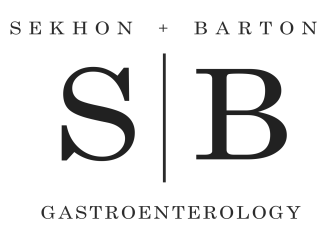|
Basic Information
Lactose is the simple sugar found in milk and milk products. It can also be found in a variety of other foods and even as a filler in some pills and capsules. The enzyme lactase, present in the
lining of the small intestine, splits lactose into two simple sugars. These simple sugars can then be absorbed by the body and used as nourishment.
In infants, milk is the main part of the diet, so it is natural and normal for lactase production to gradually decrease as the diet becomes more varied. This tends to occur in childhood and
adolescence in African Americans, Native American Indians, Hispanics, Arabs, Jews, and Asians. Northern European white races seem to keep lactase production the longest.
When lactase is absent, lactose passes through the intestine to the colon (large bowel), carrying extra fluid with it. In the colon, bacteria break down lactose into lactic acid and certain gases.
Lactic acid is an irritant and laxative. It can cause symptoms such as bloating, diarrhea, abdominal cramps, and gas or flatus.
Lactase activity is reduced in people with certain intestinal conditions such as Crohn's disease and celiac disease (gluten enteropathy). Patients taking certain drugs and alcoholic patients may also
be lactose intolerant. Finally, patients with surgical removal of part of the stomach or a large portion of the small intestine may need to reduce lactose in the diet.
It is important to remember that while lactose intolerance can cause quite uncomfortable symptoms, it does not cause damage to the intestine. The purpose of this diet is to eliminate lactose or
reduce it to tolerable levels.
Nutrition Facts
Dairy products are important sources of calcium, riboflavin, and vitamin D. Some lactose-intolerant people are able to tolerate certain dairy products in small amounts, and their diets may provide
enough of these nutrients. However, the physician or registered dietitian may recommend certain vitamin supplements and/or a calcium supplement for some patients.
Special Considerations
Tolerance of lactose is variable. Some people can eat small amounts of lactose without having symptoms while others need to avoid it completely.
Low-lactose diet: generally eliminates only milk and milk products. However, some can tolerate milk in small amounts (2 oz) throughout the day or as part of a meal. Some can tolerate small amounts of
yogurt. These patients can experiment to find a level of lactose they can tolerate. Some people can build up their level of tolerance by gradually introducing the lactose-containing foods.
Lactose-free diet: all lactose producst must be eliminated, including foods that are prepared with milk, both at home and in commercially packaged foods. These people may be able to use 100% lactose
free milk or soy milk. Labels should always be read carefully
Lactase Digestive Aids and Products: Many people can drink milk in which the lactase has been partially or completely broken down. The following products may be available at a pharmacy or grocery
store.
LACTAID and Dairy Ease enzyme products - check with a pharmacist, registered dietitian, or a physician for individual guidance on the use of these products.
-
Drops: These are added to milk. Five, 10, or 15 drops per quart of milk will generally reduces lactose content by 70%, 90%, or 99%
respectively over a 24-hour period
-
Caplets/Capsules: A person chews or swallows 1 to 6 of these when starting to eat foods containing lactose
LACTAID Milk
-
Non-fat or 1% low-fat is 70% lactose reduced
-
Non-fat calcium-fortified is 70% lactose reduced and 500 mg of calcium per cup has been added
-
Non-fat LACTAID 100 is completely lactose free
DAIRY Ease Milk
SOY Milk
For more information about these products, call the consumer information number listed on the food label. The physician, pharmacist, or
registered dietitian may also have information about these products or any newer products now available.
|

